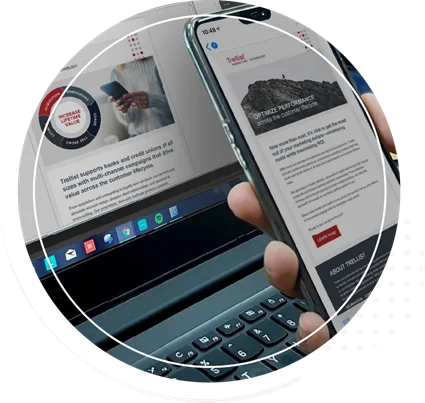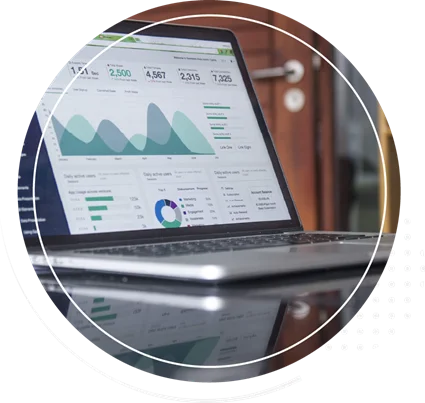In our previous post, we explained how accessibility is vital for businesses hoping to survive and grow amidst coronavirus-induced economic conditions. This post takes a deeper dive and details how accessible design can drive results across a wide variety of industries including healthcare, consumer goods and services, financial, manufacturing and B2B, nonprofit and automotive and motorsports.
Multiple design approaches to increase accessibility
First, let us explore different accessible design approaches that allow people to access, understand and use the information presented to them.
Universal design
This is a worldwide movement based on the concept that all products, environments, and communications should be designed to consider the needs of the widest array of users to the greatest extent possible, without the need for adaptation or specialized design. This refers to designing for everyone in a way that is the most usable as possible regardless of age, size, ability or disability. It can be described as “one-size-fits-all.”
Similar design approaches you may be familiar with are “Barrier-free,” “Design for all,” and “Universal access.” Because academic researchdetermines that these myriad of terms are converging toward one in particular—“Universal design”—that term will be used to encompass all approaches throughout this blog post.
A common example of Universal design is a sidewalk ramp. Ramps increase usability for everyone crossing a street, not just those in wheelchairs. An online comparison would be having custom responses when asking for gender information on a form, rather than a list of non-inclusive male and female options.
Inclusive design
Similar to Universal design, Inclusive design is a way of creating digital products that enable a wide range of diverse people to access those products without the need for adaptation or specialized design reasonably. It can be described as “one-size-fits-one.” This design approach tries to increase the type of audience each time, rather than aiming for “all” at once like in Universal design.
An example would be an existing news website that adds personalization features with increased color contrast and font resizing options for better accessibility to a wider audience.
Accessible design
While the above design aims to meet all or most audiences, Accessible design aims to meet the needs of the few who really need the information as required by American with Disabilities Act (ADA). Title III in this law includes online services offered by businesses and nonprofit services.
Another related law is Section 508 of Rehabilitation Act of 1973. It details similar accessibility compliance requirements for digital tools that are created by the federal government or any agency that gets funding from the federal government. Other countries have implemented similar laws as well to protect the people’s rights to services.
Although the design approach caters to those with permanent or temporary disabilities, its principles will often meet the needs of those with situational limitations.
An example of Accessible design is providing sufficient color contrast on a website benefits those with impaired vision, as well as a user accessing the web on a mobile device in bright sunlight. Closed captions provide a better experience for people with hearing loss, yet they also come in handy for those quietly watching a movie with a sleeping baby in the next room.
Which design is suited for your industry?
During COVID-19, the digital tools of financial and healthcare organizations as well as businesses selling products or services have become invaluable in their customers’ daily lives. Therefore, these tools must be accessible to the latest internationally recognized Web Content Accessibility Guidelines (WCAG).
The guidelines are suited for all design approaches and can be distilled into a set of four simpler principles. The acronym POUR defines qualities of an accessible user experience:
- Perceivable – ensure your customers can see and hear your content
- Operable – ensure your customers can interact with your content
- Understandable – ensure your customers understand your content and enjoy a predictable experience
- Robust – ensure your content works well with current and future technologies
In order to determine which design approach is suited for your industry, first we must consider if it is legally compliant. In 2019 itself, non-compliant lawsuits topped 11,000 for an all-time record high. Therefore, at a minimum, Accessible design approach must be considered to get your digital tools legally compliant as soon as possible.
When your digital tools are legally compliant, let us consider the target audience for your industry. For most industries like financial, healthcare, manufacturing, B2B, automotive & motorsports, and nonprofit and small business, the audience should be considered in terms of personas (or fictional characters representative of customers), which also include physical disabilities and situational limitations. Such a process ensures that accessibility is considered in all design approaches from the start.
Next, the design approach for your industry should be determined. For most industries, the widest range of audiences aimed by Universal design approach seems ideal, but may not be realistic when considering restrictions in budgets or resources. Inclusive design approach, on the other hand, considers accessibility to a wide range of audiences with imaginable, situational, and physical limitations. Inclusive design approach is suited for most industries. However, that does not help your specific needs and goals.
How can Trellist help you?
Trellist considers your specific goals, budgets, audience and messaging strategy before we determine which design approach is most appropriate for a personalized customer experience.
Although Inclusive design approach is recommended to most industries, we still consider your specific needs. For example, let us consider a special education learning center that is forced to move its services online during COVID-19-induced restrictions. The content would be designed as accessible to the widest range of audience imaginable at once even if the visual design looks simpler.
For those who need to ensure ADA compliance, Trellist now offers an ADA Audit service. Our human accessibility experts will review and utilize various testing tools to ensure your website, PDFs, digital graphics and mobile apps comply with international standard Level AA conformance of WCAG 2.1. In addition, we’ll help you develop a Digital Accessibility Policy and can perform remediation as needed.
If you already made your digital tools ADA compliant, we can help improve your customer relationships and grow them by using appropriate design approach to streamline our marketing strategy. Our efficient efforts consider the needs of your customers and your business goals and budgets.
Designing for accessibility is simply good business. We’re here to help you make it a priority. Contact us for a free strategy call with our accessibility experts.
In our next accessibility post, we’ll share our experiences for Global Accessibility Awareness Day, May 21.













